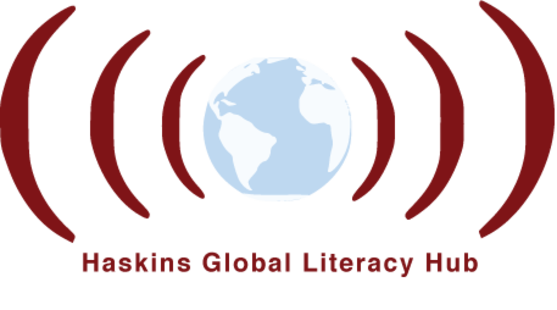Haskins Global Literacy Hub
An outgrowth of the Haskins Global Summit is the Haskins Global Literacy Hub an international and interdisciplinary collaborative that brings together an unprecedented partnership of over 20 teams of expert researchers, practitioners, educators, and education technology specialists representing 5 continents, to solve one of the most critical issues preventing people from escaping poverty, leading healthy, productive lives, and achieving their full potential. The mission of the hub is to improve language and literacy outcomes for at risk children, across languages and cultures. To that end, our unique collaborative of experts has been disrupting the current, stagnant ecosystem - which is perpetuating unacceptable social outcomes - with new and scientifically rigorous approaches. These approaches have the potential to make a significant impact on several long-standing social challenges including:
- improving the sensitivity of early (birth to five) language assessment and intervention,
- delivering on the promise of neuroscience-guided reading instruction and/or remediation,
- scaling the solutions globally using education technology (EdTech), and
- training a new generation of educators and clinicians (across cultures) to work with these emergent approaches.
Three major initiatives:
1) Expanding the reach of the evidence-based EdTech tools that we have developed (which we term GraphoLearn) to address initial literacy learning. GraphoLearn tools are currently used with every child in Finland, when they start formal schooling. Plans for scaling-up its implementation in Zambia, Namibia, Tanzania and Kenya are well underway, as well as in other under-resourced environments in Africa, India, Central/South America (Mexico, El Salvador, and Peru), and China. In the four African countries, we have prepared local researchers to obtain PhDs through our programs, trained local educators, and established federal government partnerships to promote greater sustainability. In the new geographic areas into which we are expanding, we also have local teams of experts in place as part of our global hub.
2) R&D to extend both the range of languages and levels of training in the literacy hierarchy with our international teams of language scientists. We currently have completed and proven validity in basic digital, EdTech tools for reading acquisition (decoding) in 15 languages, with 17 more in various stages of development. Our peer-reviewed scientific research shows that GraphoLearn to be 50-100% more effective, i.e., greater in reading gains, than conventional programs for the same amount of training. Our scope ranges from widely used languages internationally such as English, Spanish and Chinese, to narrowly used, but culturally important languages such as ChiNyanja and Bahasa. The focus of Grapholearn has thus far been on initial literacy learning (decoding), but we are in the process of extending these tools out to tackle the full range of literacy outcomes such as reading comprehension.
3) To expand our research arm into the realm of citizen science, classroom-based neuroscience and neuroprediction for better links between bench (e.g. cognitive neuroscience research) and bedside (e.g. schools). For example, our birth to five initiative shows that infant brain measures can predict middle school reading ability with high accuracy, with the greatest prediction being when combined with research-based cognitive measures. Such efforts will allow true implementation science and faster translation of science to the community in terms of developing new assessment, instructional, and intervention approaches.
The Haskins Global Summit generated a series of articles by attendees in the journal New Directions for Child and Adolescent Development—Special Issue: Global Approaches to Early Learning Research and Practice, issue edited by: Kenneth R. Pugh, Peggy McCardle and Annie Stutzman.
